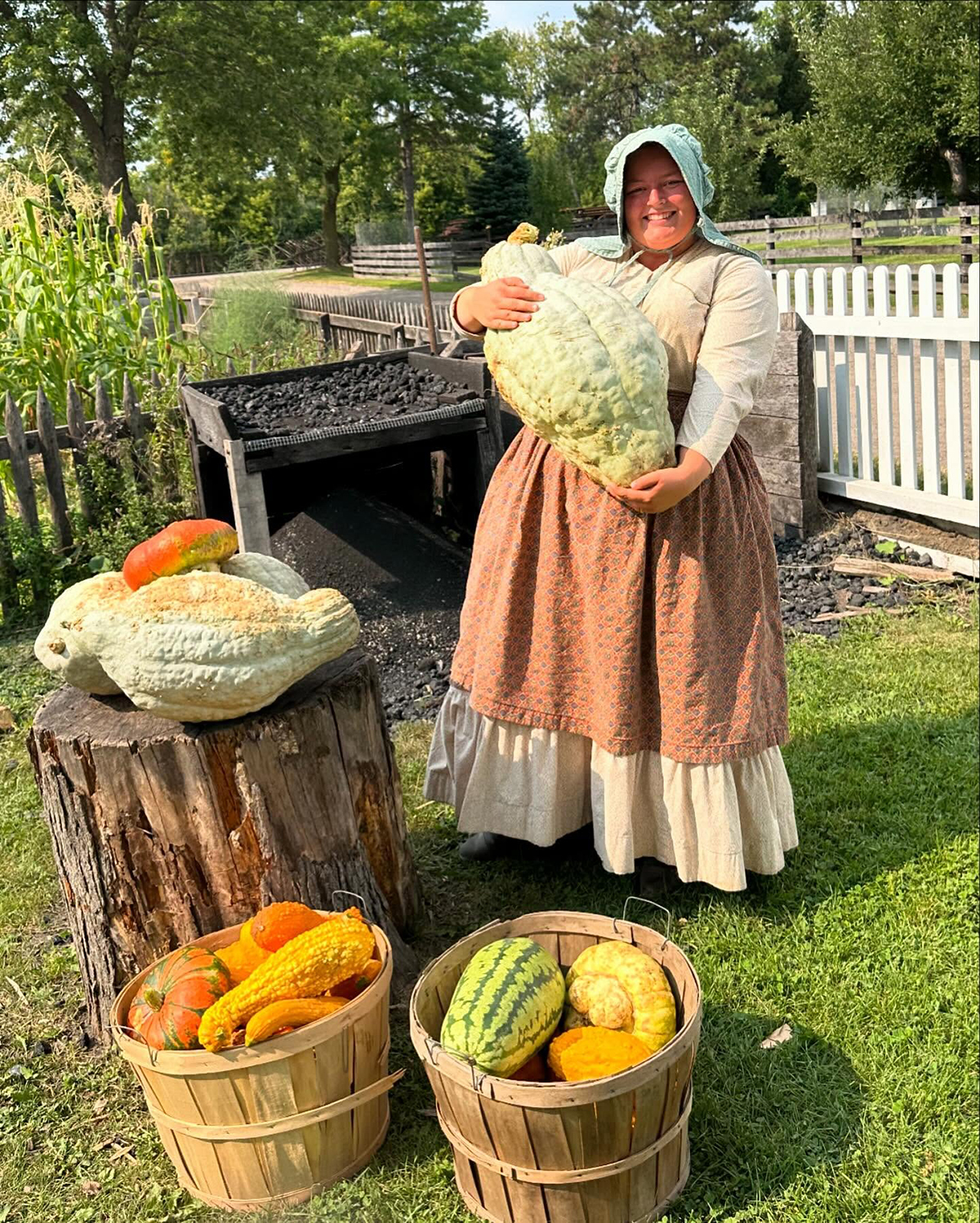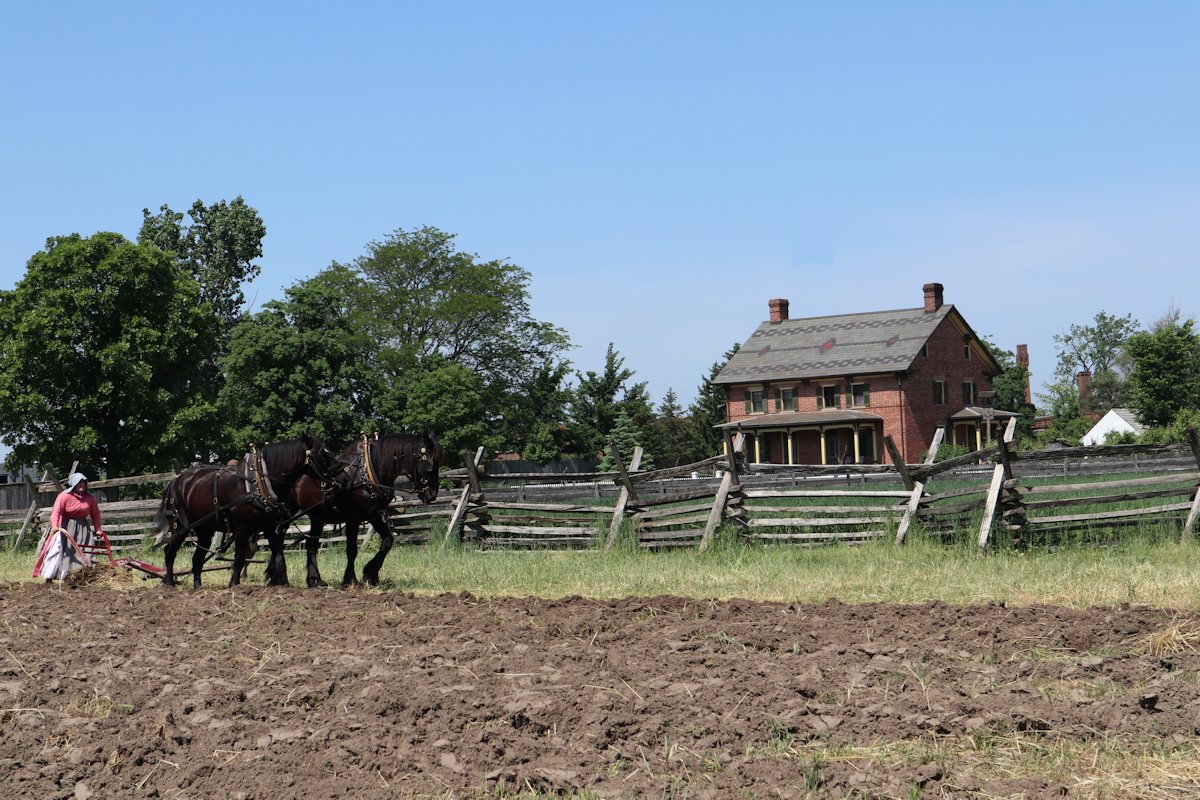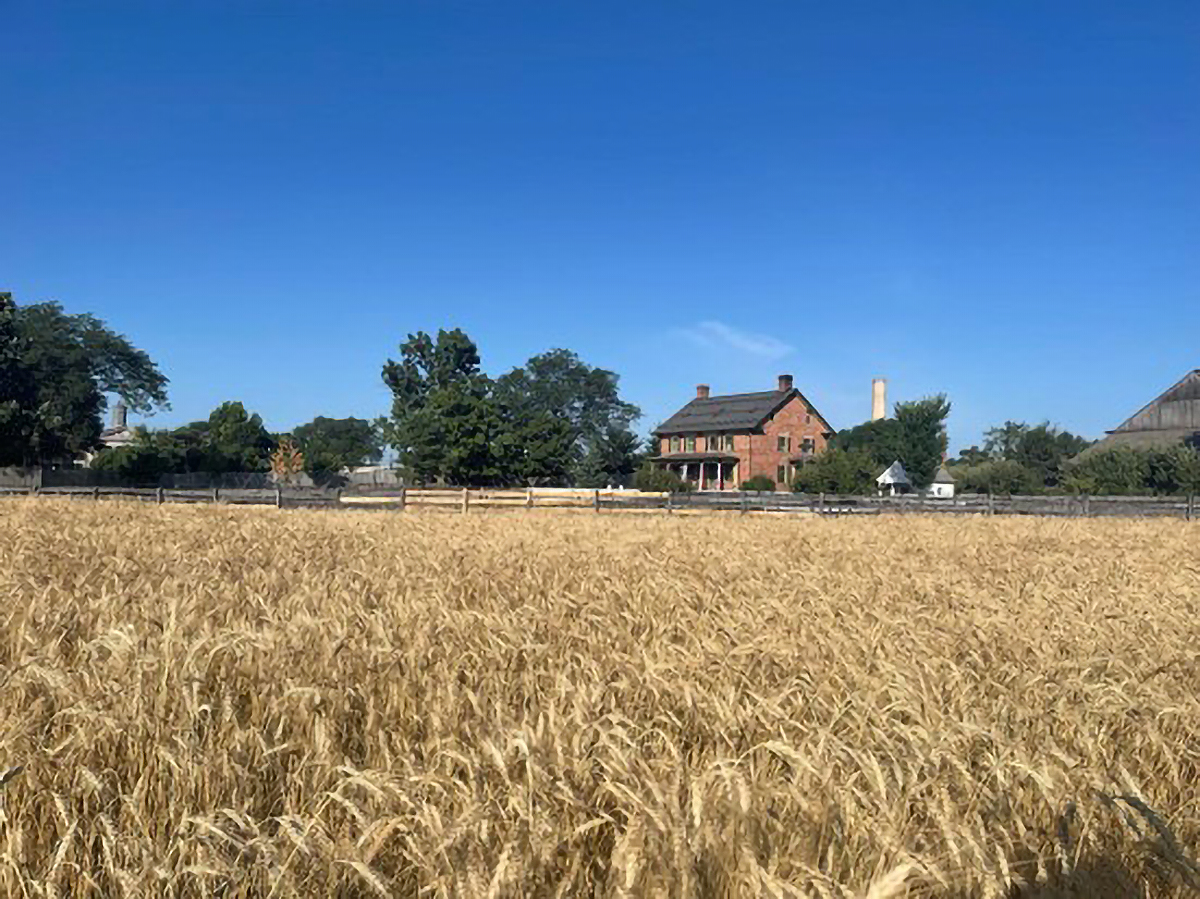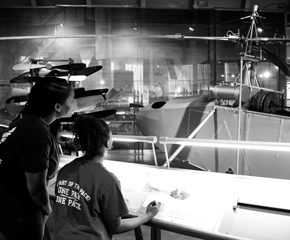Posts Tagged by emily sovey
Learning from our Ancestors – Garden Sustainability in the 19th Century
Greenfield Village is host to a plethora of gardens, both floral and vegetable. The Living History and Agricultural teams are responsible for the historic growing spaces to produce the vegetables, fruits, dye materials, and herbs that our ancestors would have relied on — spanning from 1760 through 1930. These items are grown in both kitchen gardens and fields. We can learn from these sustainable systems, and from those that came before us, to make educated decisions for our modern home gardens. Firestone Farm is an excellent example, as it has the most comprehensive growing space, and guests can see the process from farm to table.

Firestone Farm kitchen garden / Photo courtesy of Morgan Lewerenz
The kitchen garden has been the heart of the growing space for home use for many centuries. During the 19th century, the vegetables, herbs, and fruit grown in the kitchen garden were the first used in the house for daily meals. When there was abundance — much of which was planned — then produce would be used in preservation recipes. The cycle of the kitchen garden is just as necessary for human consumption as it is for the annual rehabilitation of the growing space. Gardens serve the home during the growing season and in turn, we give back to the gardens when the plot is uncultivated during the winter. During the cold season, animal waste on the tilled land as well as distribution of compost as the ground begins to warm prepare the garden for the next year of production. Likewise, kitchen scraps could equally go back to the compost and the hogs, providing sustenance for the future. Many agricultural manuals of the time also include instructions on how to use objects on the farm and surrounding lands to build structures in the garden. Guests will often see A-frames and trellises in the gardens made by branches that have fallen and been repurposed.

The field at Firestone Farm / Photo courtesy of Morgan Lewerenz
The field is the backbone of the growing spaces for a farm. This space is often planted with row crops for cellar storage, food for animals, and grains that could be sold. The Firestone Agriculture team includes Turkey Red winter wheat in their annual plantings based on research into the Firestone family in the 1880s. This sellable crop would have been planted in late fall and come spring clover could be broadcasted over the wheat to help minimize weeds from developing. After wheat harvest in mid-summer, the clover would be plowed into the ground to help replenish the soil with nitrogen. Another soil replenishing cover crop, like buckwheat, could be planted between harvest and planting. The buckwheat would then be tilled into the soil before replanting the next season's wheat. Crops like corn were often planted with pumpkins, a testament of Indigenous knowledge of sustainability. The "three sisters" method of planting allowed for the best use of space in the field and the best support system for the crops planted. Guests can see how the Firestone team grows pumpkins in the corn field for that same efficiency as both are harvested at the same time.

"Three sisters" planting at Firestone / Photo courtesy of John Forintos
Composting was essential to the success of growing spaces on 19th-century farms. Many period manuals instructed farmers to use their "thoroughly rotted and rich compost" to supplement nutrients in their garden spaces. The current Firestone teams use a combination of animal and produce waste to create their compost and have even been working with the new biodigester at Stand 44 to supplement plant matter to help keep the mixture balanced. Manure also has to go through a stage of composting before it can be useful in the garden. Guests can see the consistent manure heap, often steaming, near the barn ramp. The manure has to be regularly turned and watered — just like a compost pile. Similarly, the farm team uses a technique called "hard packing" for the animal pens during the winter. This practice allows the manure to be covered with straw, creating layers of buildup throughout the winter. Pens stay clean with additional straw and the animals benefit from the warmth of the straw-manure layers starting to ferment. Then in the spring, pens are deep cleaned and the mature manure/bedding is added to the pile adjacent to the barn ramp.
The Living History and Agriculture teams are using historic methods to care for the growing spaces in Greenfield Village, but this is knowledge that has been around for hundreds of years and much of it is still being used today. We hope that today's gardeners can be inspired by our ancestors to try out some new-old sustainable practices at home!

Turkey Red winter wheat at Firestone Farm / Photo courtesy of John Forintos
Emily Sovey is manager of Living History
John Forintos is manager of Historic Agriculture, Horticulture, Animal Husbandry and Town Life
Morgan Lewerenz is master farmer of Historic Agriculture
Kelly Salminen is a Firestone Farm program specialist
Archival Inspiration: Decorating for Easter

Many of us celebrate Easter with a number of traditions: dyed eggs, baskets full of candy, or decorations inspired by spring, just to name a few. Many of these traditions go back in history more than 100 years.
At Edison Homestead in Greenfield Village, we showcase a variety of activities during the Easter weekend that would have been enjoyed around 1915. Where do we find our inspiration? Much of the instructional information used to plan these activities come from promotional booklets from companies like Dennison Manufacturing Co. and their Dennison’s Party Book, or from magazine publications like the Ladies Home Journal, both available to families at the time.
In 1915, Easter crafts ranged from decorative pieces for the table to edible delights. Dennison Manufacturing Co., which today is now known as Avery Products Corporation, was a large supplier of inexpensive paper products that encouraged decorations for any number of parties, including an Easter celebration. Listings in the Dennison’s Party Book contain a rabbit with basket of eggs decoration, decorated crepe paper, bon bon boxes, and purple and white festoons, all of which were priced at 25 cents or less. They also suggest how a table might be decorated using the items they have listed for sale as well as homemade items (made of paper, of course).
Easter cards are one of the projects suggested in The Ladies Home Journal, 1912 April edition, and would have been an inexpensive craft to make as a gift. In fact, the journal states that, “[Easter] gifts should always be simple and inexpensive; if they are made rather than bought, so much the better.” Using images from flower catalogues, garden and agricultural magazines, the picture is traced on a folded edge of thick paper to create the body of the card. Once cut out, the image is then colored in and an insert is created to write an Easter note to the recipient.
Like our own Easter traditions today, the journal included many references to sweet treats that could be given as gifts. Chocolate eggs could be made by carefully removing the raw egg from the shell, washing the shell, then filling it with melted chocolate. Once cooled, the egg shell could be colored and decorated with crayons and colored pencils, with a scrapbook pictured glued over the opening. Not only were sweets made, but so were displays to put them in. Moss glued onto a half egg shell provided a holding space for small candy eggs or jelly beans.
Feeling inspired and ready to try creating your own archive-inspired holiday decorations? Stop by the Benson Ford Research Center to see a copy of the Dennison's Party Book for yourself.
Emily Sovey is Supervisor of Inspiring and Living History at The Henry Ford.
20th century, 1910s, research, making, home life, holidays, Greenfield Village buildings, Greenfield Village, Easter, by Emily Sovey

